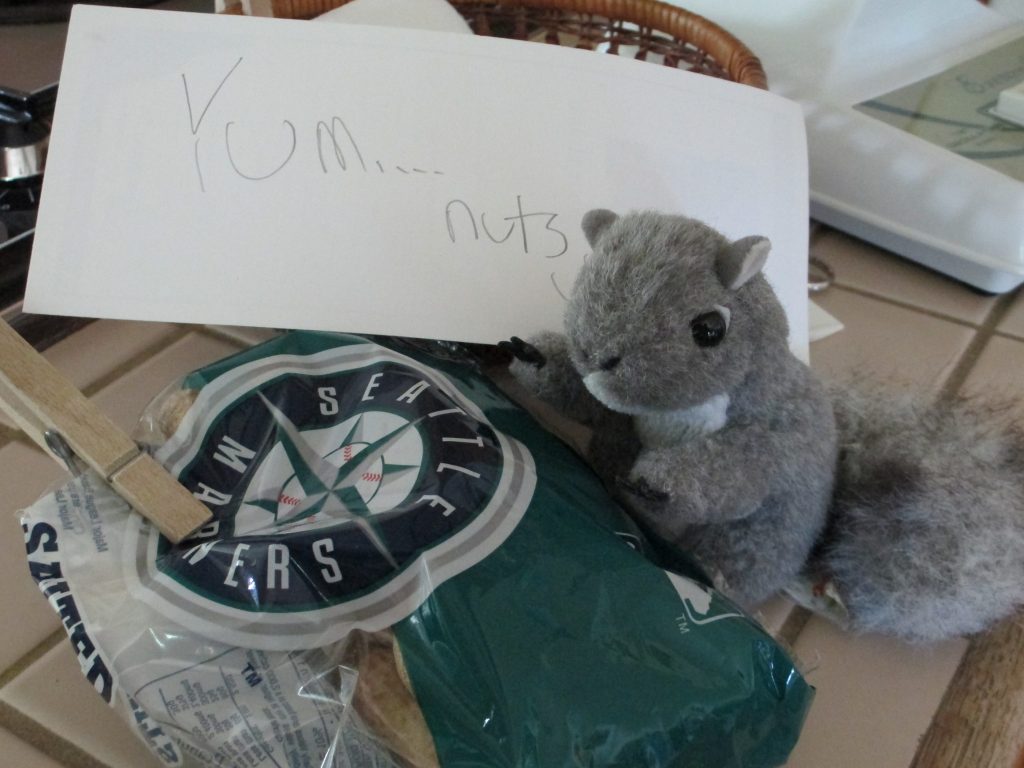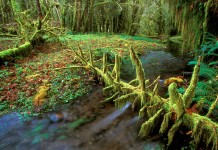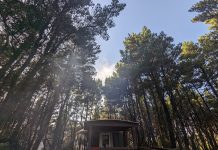Peanuts were a popular American food at the turn of the 20th century, including in Grays Harbor County. From county fairs to snack stands on the seashore, they were a symbol of summer and carefree days.
Can You Grow Peanuts in Grays Harbor?
Although peanuts could not be grown locally, they were widely enjoyed in Grays Harbor. Peanut butter was starting to become popular at the turn of the 20th century. It could replace butter, an 1898 Aberdeen Herald article claimed, “for the table use, and said to be excellent for shortening purposes, and for gravies, sauces, etc.” Peanut butter could be made inexpensively at home using a meat grinder and a little salt or purchased at grocery stores.

Besides peanut butter, stores sold peanuts and peanut candy. Local candy and tobacco stores were the best places to get roasted and candied nuts. “He does his own peanut and popcorn roasting,” the Aberdeen Herald praised H. Boutyette’s store at 213 South F Street in 1907, “As a consequence you can always get it fresh—just the way you like it.”
Peanuts were also sold on the street from snack stands and wagons in Aberdeen and Hoquiam. Operating a stand was hard work and not without dangers. In 1911, the Aberdeen Fire Department was called when a leak caused the gas tank of B.H. Fowler’s peanut and popcorn wagon to explode. Stationed at the corner of H and Heron Streets, operator George Fletcher, who was making popcorn at the time, was badly burned. That same year a Hoquiam snack stand on Eighth Street near the Pomona Hotel owned by John Andros, a Greek immigrant, was robbed. Police were able to track down part of the loot to a cache under the sidewalk a few blocks away by following a trail of peanut shells the hungry robber had left behind.
Grays Harbor History: Snacking On Peanuts
Affordable and portable, peanuts were an ideal snack at special events. They were commonly sold as snacks at local theaters, baseball games and carnivals. And when people thought of the circus, they also thought of peanuts. “Peanut and pink lemonade vendors cry their wares and add to the general good spirit,” observed the Aberdeen Herald when the A.G. Barnes Big Three-Ring Wild Animal Circus visited the city in 1914.

In 1906, Aberdeen High School gave a county fair and sideshow themed reception for the Olympia High School football team in the school’s gymnasium. “Everybody and his cousin was there” the Herald reported proudly. There were games and schoolgirls sold candy, roasted peanuts, and popcorn.
At home, people played peanut-themed games at parties with friends and family. Friends of W.B. Fetterman and his wife, for example, held a “peanut hunt” at their Aberdeen home during an afternoon tea in 1893. Aberdeen’s J.R. Evans even called the gathering at his home in 1902 a “peanut social.”
Peanut Stands on the Washington Coast
Peanuts also proved a favorite seaside snack for tourists. In summer 1895 alone there were 13 peanut stands on the beach at Westport, compared to 17 lunch stands. “Lemonade and peanut stands,” the Aberdeen Herald commented “are springing up along the sidewalks like mushrooms on a hot day just after a shower of rain.”
A trip to the seaside without peanuts available was unthinkable. In 1913 when the Tacoma Elks took a summertime excursion to Moclips, they scheduled a full day of events and activities, promising that “There will be no end of peanuts and popcorn for the children.”

Peanut Recipes
Besides roasted peanuts, there were many peanut recipes printed in the Aberdeen Herald, for everything from peanut cookies to candy and salads. Peanut brittle was after all, an 1893 recipe promised, “always a favorite for grown persons and children.”
Peanuts were celebrated for their versatility. “One of the most useful foods in reducing the amount of the butcher’s bill is the peanut,” wrote Kitchen Cupboard columnist Anna Thompson on “Peanut Foods” in 1912, “Vegetarians have a number of ways of serving these nuts that may prove acceptable even to those of us who do not adhere to their diet.” She suggested making lettuce and peanut sandwiches, peanut and celery salad with dressing made of peanut butter, peanut soup and peanut pudding.
And, of course, there was always the peanut butter sandwich, which at this time sometimes included lettuce. Advising women on “how to fill the dinner pail” for working husbands in 1912 an unnamed author advised throwing in roasted peanuts as “novelty,” avoiding the typical “wedge of indigestible pie, a sandwich and a bottle of coffee.”
Peanut Legacy
While peanuts are no longer as popular due to allergy awareness, they remain a favorite food. At the turn of the 20th century, they were seen as the food of the common man. The Aberdeen Herald praised peanuts in 1899, writing “it may truly be said the peanut is the emblem of democracy. It is for the people. Though crude and ungraceful in form, it has life-long powers and can sustain nations. Let the American eagle bear one within its beak.”












































